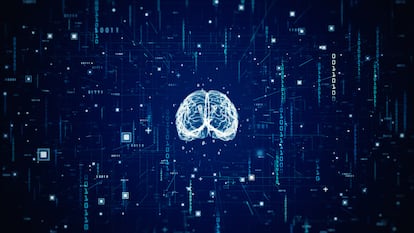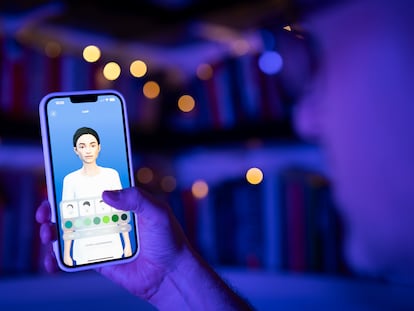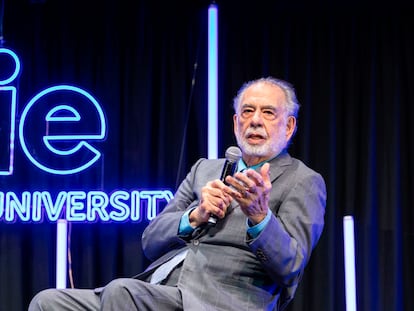Will an artificial device be able to equal the intelligence of the human brain?
The possibilities offered by artificial intelligence today are as extraordinary as they are unpredictable, posing a constant challenge to their biological counterparts

The development and new possibilities offered by artificial intelligence never cease to amaze us. Today, some of the most relevant developments for Gray Matter include the creation of algorithms capable of tracking neuroimaging and genetic and physiological data of numerous individuals from which biological markers can be extracted to accurately predict the onset of neurological and mental illnesses such as Alzheimer’s disease. Undoubtedly, this is something that can help design or fine-tune treatments to combat neurodegeneration or its progression.
One different type of such development is the now very popular ChatGPT (Chat Generative Pre-trained Transformer). This is a comprehensive computer consultation tool that we can now access free of charge to request things that were once unthinkable, like a report on a legal case, a newspaper article on a specific topic, or a solution to a complex problem, sometimes even of an emotional nature, with a variety of solutions. As I am allergic to pollen, I have just asked my ChatGPT where I should go on vacation to avoid suffering from this allergy, and its answer seems convincing.
However, as is often the case with major advances in science, artificial intelligence has been met with criticism. In the particular case of ChatGPT, which now has more than 100 million users worldwide, OpenAI, its creator, has been on the receiving end of criticism. This has regarded the copying of information on the Internet and its statistical rather than cognitive processing, the invention of data or facts and also malicious uses of technology, which, in turn, draws ChatGPT into the moral conflict that major scientific and technological advances often provoke.
New, more powerful versions of the gadgets developed to date (e.g., a ChatGPT Turbo) are in the making, and it seems that artificial intelligence is poised to replace or even surpass many human activities, especially those involving ingenuity and creativity. Nowadays, its possibilities are as extraordinary as they are unpredictable, and they never fail to challenge the biological potential of its creator, which is none other than the human brain.
This challenge raises the question posed by this article and also leads us to believe that anything involving the development of simulations of how the brain works can also be a means of learning more about the brain. However, from the outset, we are faced with the stumbling block of not yet knowing all the functional secrets of the human brain, an organ that comprises an impressive 85 billion neurons interconnected in a very complex way by some 10¹⁴ synapses. Therefore, artificial intelligence, its algorithms and machine learning will always be trying to reproduce or simulate something that we only understand to a limited extent.
Indeed, we are now in possession of and can learn much from the wealth of anatomical, physiological and genetic data, and from the structural connectome of the human brain, in other words, the way in which its neurons are connected. However, even if we were able to simulate all this data in a complex artificial intelligence program we might still be a long way from guaranteeing a close reproduction of what the human brain does or is capable of doing.
With this in mind, Viren Jain, a Californian specialist in computer and cognitive science and a leader in the study of brain connectivity, — the connections between neurons — asked a number of questions in a recent article in the scientific journal, Nature. He wondered whether machine learning can truly be used to build models that simulate the activity of brains; whether we can train artificial intelligence programs on connectomes and other data to reproduce the same activity of neurons that we would normally expect to find in biological systems; and whether a system such as the human brain can be understood when its behavior is seemingly reproduced by mathematics or a computer.
In addition, Viren Jain believes that, although the main problem facing multiple studies such as the now abandoned European Human Brain Project remains the limited knowledge of detailed anatomical and functional maps of the brain, it is still very difficult to gauge the extent to which artificially developed simulation systems could accurately capture what occurs in biological systems. An additional problem is the way in which an artificial intelligent device would have to express itself for us to believe it to be truly comparable to the human brain.
On the other hand, it is not even clear that we will ever be able to artificially construct anything as complex as the human brain. This organ is also blessed with emergent functional capacities, such as phenomenological consciousness, the nature of which we have not yet grasped. The functional integration hypothesis of scientists like Giulio Tononi or Christof Koch maintains that consciousness arises spontaneously from complex systems such as the human brain, which means that it comes naturally to us at birth. This suggests that, if artificial intelligence were one day able to build a system as complex as our brain, its superior emergent capabilities could also arise spontaneously from such a system, even if we still do not understand its true nature, namely, how this was made possible.
The subject will no doubt spark the exciting and secular debate as to whether the intelligence of an artificial system could equal, let alone surpass, that of its own creator. As of today, this does not seem possible.
Sign up for our weekly newsletter to get more English-language news coverage from EL PAÍS USA Edition
Tu suscripción se está usando en otro dispositivo
¿Quieres añadir otro usuario a tu suscripción?
Si continúas leyendo en este dispositivo, no se podrá leer en el otro.
FlechaTu suscripción se está usando en otro dispositivo y solo puedes acceder a EL PAÍS desde un dispositivo a la vez.
Si quieres compartir tu cuenta, cambia tu suscripción a la modalidad Premium, así podrás añadir otro usuario. Cada uno accederá con su propia cuenta de email, lo que os permitirá personalizar vuestra experiencia en EL PAÍS.
¿Tienes una suscripción de empresa? Accede aquí para contratar más cuentas.
En el caso de no saber quién está usando tu cuenta, te recomendamos cambiar tu contraseña aquí.
Si decides continuar compartiendo tu cuenta, este mensaje se mostrará en tu dispositivo y en el de la otra persona que está usando tu cuenta de forma indefinida, afectando a tu experiencia de lectura. Puedes consultar aquí los términos y condiciones de la suscripción digital.
More information
Archived In
Últimas noticias
Most viewed
- Alain Aspect, Nobel laureate in physics: ‘Einstein was so smart that he would have had to recognize quantum entanglement’
- Mexico’s missing people crisis casts a shadow over World Cup venue
- Why oil has been at the center of Venezuela-US conflicts for decades
- Trump clarifies who is ultimately in charge in Venezuela: ‘Me’
- Mexico seeks to shore up its defenses following US incursion in Venezuela











































